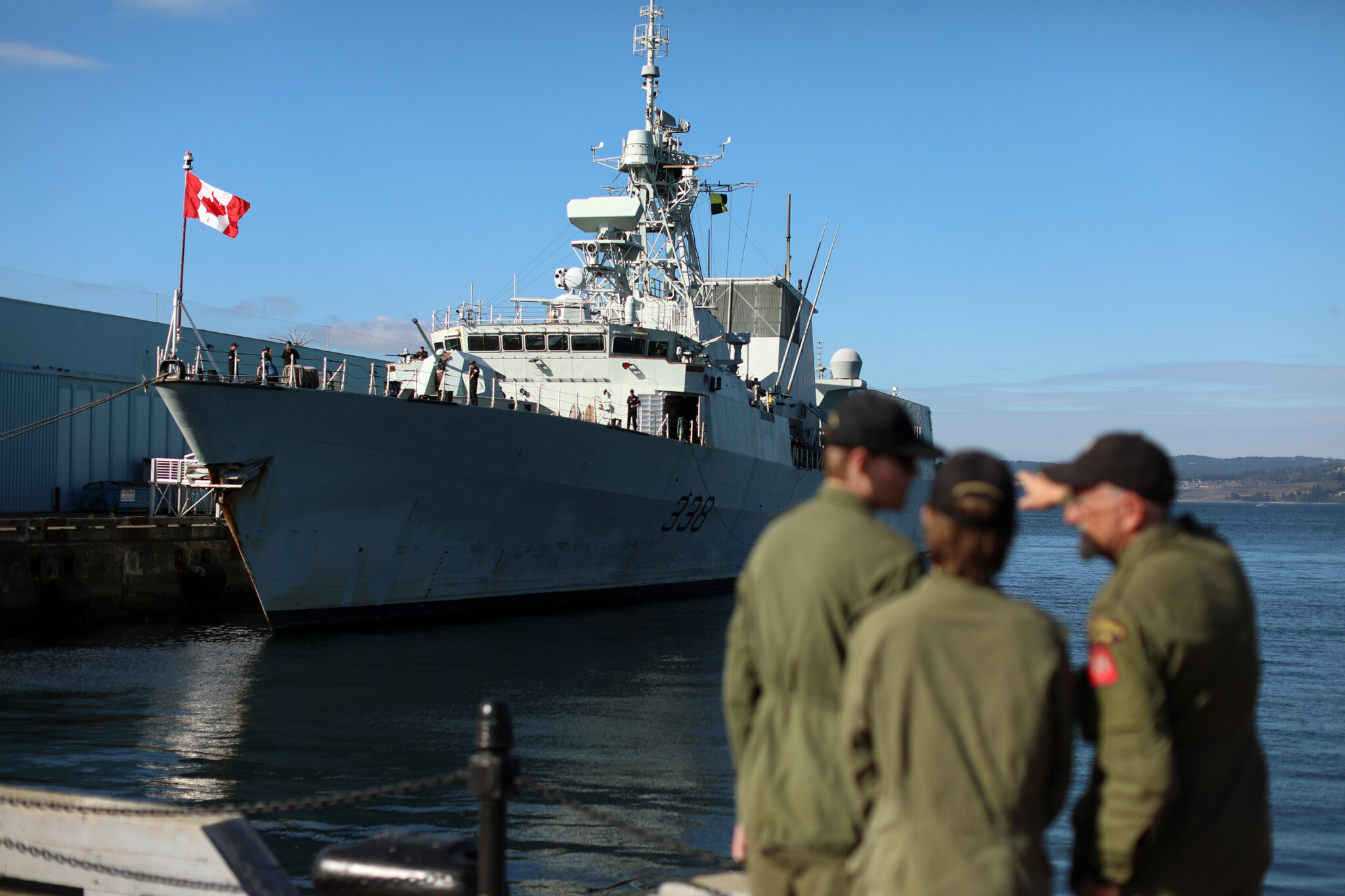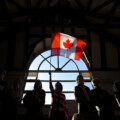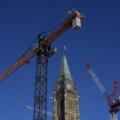In the wake of the NATO 75th Anniversary Summit and continuing pressure to ramp up its defence spending, Justin Trudeau announced that Canada now expects to increase defence spending to reach the target of 2 percent of GDP by 2032. He has still yet to provide specific details on how he plans to do this.
Generally speaking, Canada’s national mindset has not been as concerned about defence and national security given the presence next door of the United States as well as the insulating effect of the Atlantic and Pacific oceans. That is changing. The proposed increase may be due to the decision to finally take aspects of Arctic security more seriously in the face of Russian and Chinese incursions by moving to increase ice-breaking fleets as well as invest in new submarines.
It is not that Canada is not capable of having a more capable military. Indeed, we had quite a large and effective one during the Second World War. For a nation of 11 million, there were nearly one million men and women serving in the armed forces, 48 RCAF air squadrons, and 471 fighting vessels of various types.
However, that was a unique era when defence spending was paramount and came to comprise just under 40 percent of GDP. Despite a massive demobilization, military spending remained robust into the 1950s at over 5 percent of GDP, and until the late 1960s we even had an aircraft carrier. The period since the 1970s however has been marked by a continued decline in the defence share to where it stood in 2022 at about 1.2 percent, according to World Bank Data(NATO currently estimates it at 1.37 percent).
While the counter is that in absolute dollars, Canada spends the seventh largest amount amongst NATO countries, it nevertheless ranks fifth to last amongst NATO member countries in defence spending relative to GDP. Amongst the G7 countries, Canada ranks sixth in terms of its defence spending to GDP share just behind Italy and Germany (at 1.7 and 1.4 percent respectively) and ahead of Japan at 1.1 percent. Spending as a share of GDP is not the only measure of the military, and Canada as a large wealthy country does seem to possess some clout.
The Global Firepower Index—which uses 60 indicators to construct an index of military strength—ranks Canada 27th out of 145 countries worldwide putting Canada’s military alongside that of Argentina and Algeria. However, Australia ranks 16th in the world with a military power apparently comparable to that of Egypt, Ukraine, Israel, and Iran. And at the top are the usual suspects ranked in order from the top: the United States, Russia, China, India, South Korea, and the United Kingdom. The Italians, incidentally rank 10th while Japan—which spends less than Canada or Italy as a share of GDP—ranks 7th. Obviously, even with defence spending, some countries seem able to spend less and get more.
As a large natural resource-intensive intensive, sparsely populated, continent-sized country with oceans on three sides, Canada does bear some resemblance to Australia’s situation—minus the protective immediately next-door neighbour thing—and some comparisons with Australia are useful. Australia, with a population of 26 million and a per capita GDP of nearly $65,000 USD in 2022 spent 1.9 percent of its GDP on defence.
According to Global Firepower, Australia, among other things, has 57,350 active military personnel, 43 naval assets (including two helicopter carriers, three destroyers, eight frigates, and six submarines), 48 pieces of artillery, 59 tanks and 24 fighter planes.
Canada, with a population of nearly 40 million and a per capita GDP of $56,000 USD has 68,000 active military personnel, 67 naval assets (including zero helicopter carriers, zero destroyers, 12 frigates, four submarines, and 14 patrol vessels), no pieces of either self-propelled or towed artillery, 74 tanks, and 65 fighter planes.

People walk by the HMCS Winnipeg, a Halifax-class frigate in Victoria, Sept. 17, 2023. Chad Hipolito/The Canadian Press.
Canada seems to have more patrol vessels and fighter jets than Australia, but then Australia seems to have more heft on the naval side. There is also the issue of the vintage of equipment, and while Canada has more fighter planes, they are apparently long in the tooth and about to be replaced alongside a lot of other older equipment throughout its armed forces. Despite a population that is almost 50 percent larger than Australia, Canada only has about 20 percent more active military personnel. And, despite being surrounded by three oceans, Canada does not have a single helicopter carrier and one-third fewer submarines—which are also in need of replacement.
You could argue that Australia simply spends more of its GDP on defence because it is a lot wealthier than Canada and that is why its Global Firepower ranking puts it in the top 20 out of 145 countries. Indeed, Australia spends quite a bit more. The total Australian defence budget according to Global Firepower is 52.6 billion USD while for Canada it is $26.5 billion USD. However, Italy seems to do all it does on a defence budget of $31.6 billion USD.
As an added note, Italy which has a per capita GDP in USD of $35,000 and ranks 10th on the Global Firepower Index, has 90 fighter jets (for a significantly smaller geographic land mass compared to Canada), two aircraft carriers (not helicopter carriers), four destroyers, 13 frigates and 18 patrol vessels. It has a population of 59 million (nearly 50 percent more than Canada) and 165,000 active military personnel (over 140 percent more than Canada). And for those that say more guns means less butter, Italy has a pretty comprehensive public health system and social safety net.
This suggests once again that when it comes to military spending, it may not just be how much you spend but how you spend it. This should come as no surprise to Canadians that you can spend more and get less given that has characterized our health system for years.
Going forward, spending more may not be enough. For Canada to simply match Australia’s defence budget in USD, it needs to double its defence spending. This would actually bring its defence spending to GDP ratio to well over 2 percent. In other words, simply getting to 2 percent by 2032 will likely not do enough to reverse what has been our neglected national defence and security needs.
It also does not help that Canada has a vast geography relative to population to consider, unlike more compact regional defence needs such as those facing Italy. As for how we spend our money and the efficiency aspects of our military spending, we won’t even go there.









